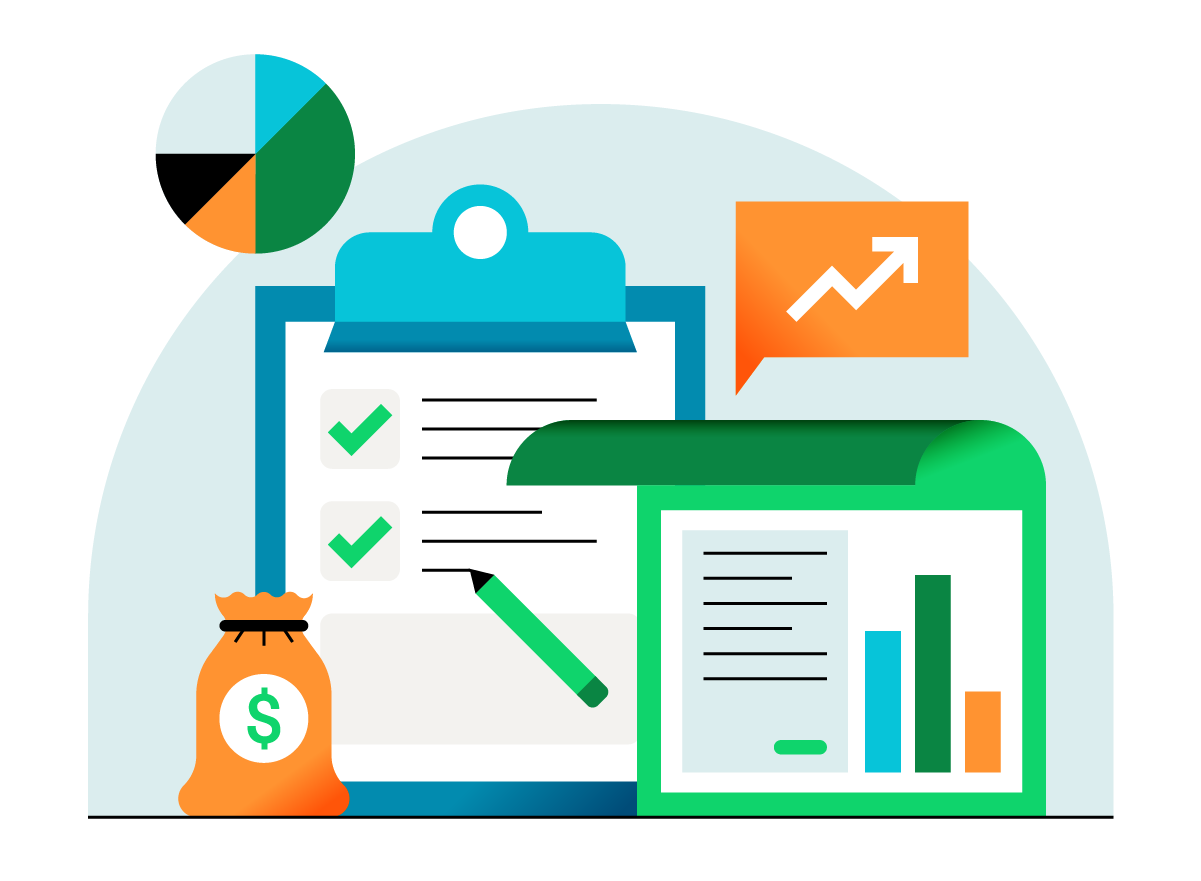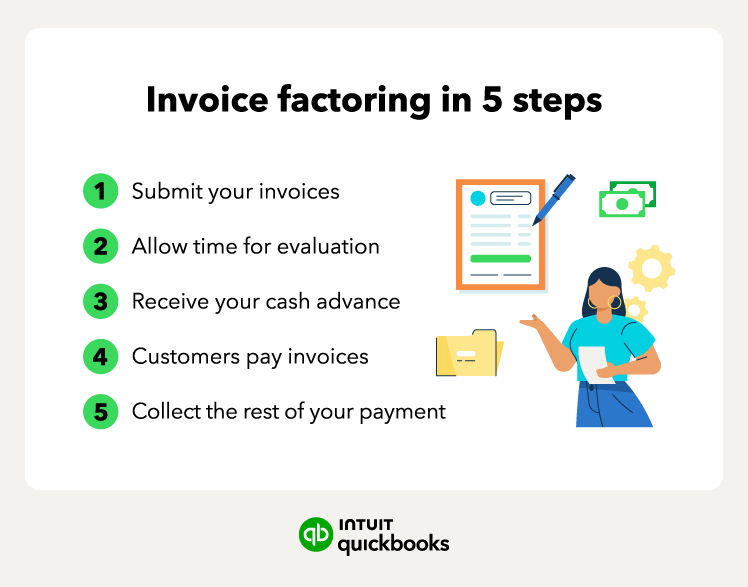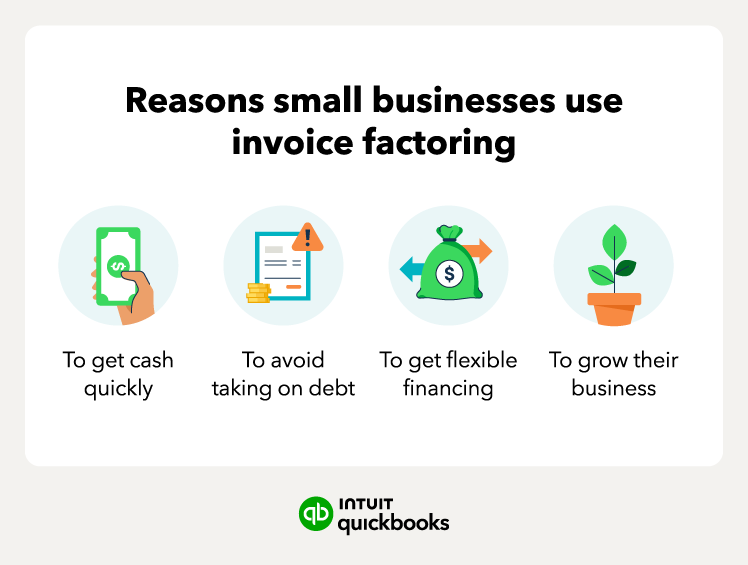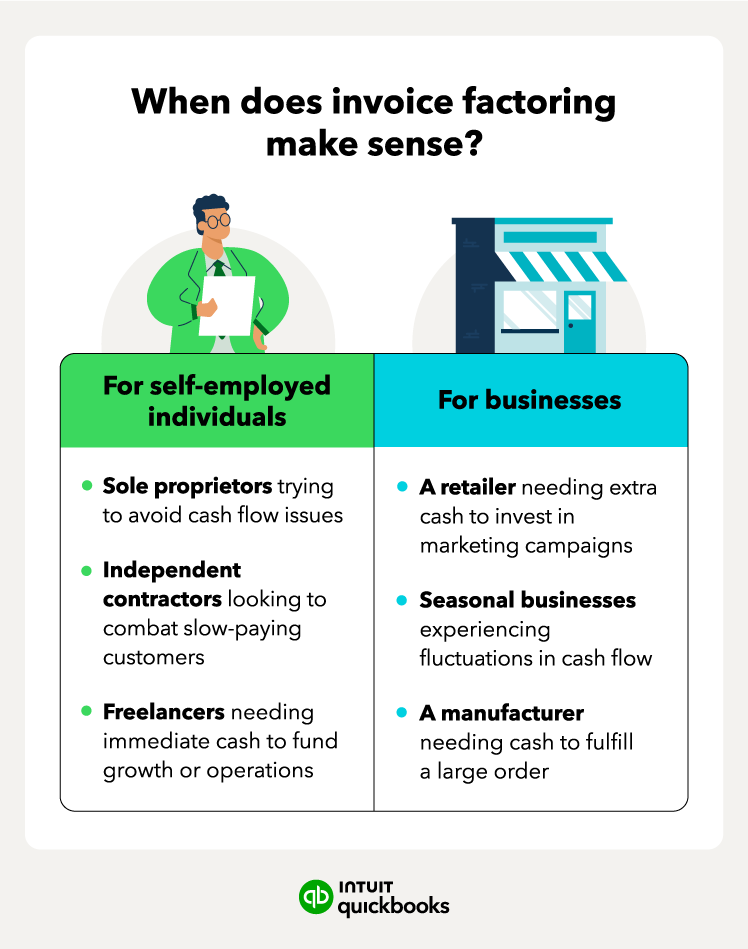Example of invoice factoring
Say your small business needs $20,000 to replace some necessary equipment quickly, but you don’t have the working capital to do so. Rather than reaching out to a traditional bank for a loan, you decide to take a look at your accounts receivable.
You notice you have $25,000 in outstanding invoices and decide to sell your accounts receivable to an invoice factoring company. The company agrees to buy your accounts receivable for the value of the invoices minus a factoring fee of 4%.
Thus, the invoice factoring service will pay you a total of $24,000 ($25,000 x 96%) for the invoices. Typically, you will get a cash advance for a portion of the total amount within a few business days.
After the factoring company collects all payments for the invoices, they’ll send you the remaining balance.
Using our example, here’s what the invoice factoring process looks like:
- Invoice value: $25,000
- Fee (4% as an example): $1,000
- Initial cash advance (85% of the invoice after fee): $20,4000
- Remaining advance: $3,600
- Total you’ll receive: $24,000
















